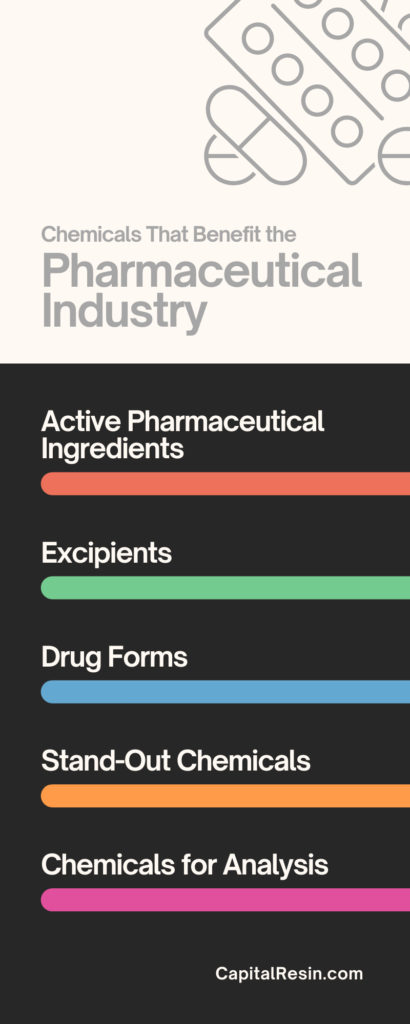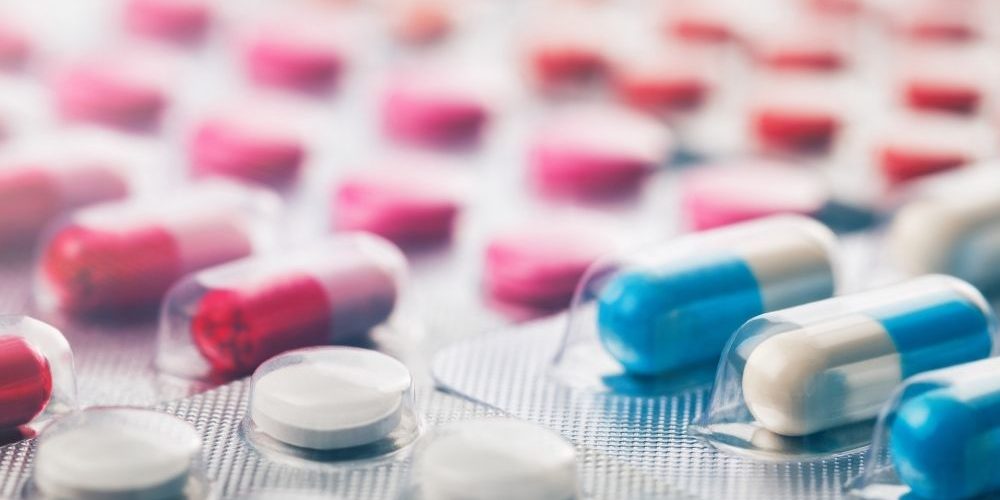Every form of medication is carefully researched and designed with various chemicals necessary to keep us all healthy. Over time, these chemicals have had a profound impact on our quality of life. Many people are often wary of chemicals because they don’t understand them, and with COVID-19, more attention than ever has been placed on the pharmaceutical industry. To help you better understand how they’re used, let’s take a look at some of the chemicals that benefit the pharmaceutical industry that have become so vital in the creation of medications that we might take for granted.
Active Pharmaceutical Ingredients
Active pharmaceutical ingredients, or API, are chemical compounds that have been isolated from raw pharmaceutical materials or achieved through organic synthesis to provide the active substances responsible for causing the intended effects of a drug. These compounds are much more complex than synthetic compounds, and thus need to be replicated rather than created from scratch. As a result of this complexity and their presence in every kind of medication, organic synthesis is an incredibly important part of pharmaceutical development. Some of the important chemicals in obtaining APIs include hydrochloric acid, aromatic sulfonic acid, and monochloroacetic acid—all of which act as catalysts in the process of organic synthesis.
Monochloroacetic acid, in particular, is a highly valued semi-finished product that is widely used through the pharmaceutical industry. It may even be more familiar than you’d think because it’s used in the creation of common medications like Ibuprofen, caffeine, vitamins, glycine, and more.
Excipients
Better known as the drug carriers, excipients are also either natural or synthetic compounds but are devoid of any pharmaceutical properties. Instead, their primary function is to serve as a carrier for the active substances, solubilizers, or emulsifiers. The most common form of excipients is a variation of solubilizer that is capable of transferring the drug without changing its characteristics. In contrast to the active substances, excipients are also referred to as the “inactive substance” because they have no bearing on the drug’s intended effects but take up more of a medication’s composition than the active substances. Furthermore, the choice of excipient varies depending on the dosage of a particular drug rather than simply on the type of drug you’re dosing for.
The most common excipients include cornstarch, lactose, talc, gelatin, silicon dioxide, shellac, calcium stearate, magnesium stearate, and glaze.
Drug Forms
The way we consume medication is also part of the design process. Prepared in many forms, drugs can either be made into solid, semi-solid, or liquid states. This is done primarily through plastics and polymers in order to create solid drug forms like capsules, pills, powders, tablets, and granules, semi-solid drug forms like solutions, suspensions, and syrups, and lastly liquid drug forms like ointments, gels, and creams.
Such a wide variety of forms allows for the drug’s effectiveness to be a bit more controlled or enhanced. Pills, tablets, and capsules may release their beneficial effects over a short period of time as they dissolve in your stomach, but medications that are injected or infused directly into your bloodstream will often be more instantaneous and far more powerful in their effects due to such a direct method.
Other times, the various forms are meant to provide a better ease of access. For example, children may not be able to swallow pills and capsules, so liquid variants of medications are designed and created to make them more accessible.
Stand-Out Chemicals
One of the most basic chemicals that benefit the pharmaceutical industry is chlorine. Serving as raw material, chlorine is an important intermediate for the synthesis of various drugs and can even be embedded into their molecules. Chlorine is so useful, in fact, that it can be used to synthesize multiple groups of drugs, including diuretics, anesthetics, cardiological, antineoplastic, or psychotropic drugs despite the fact that their chemical structure, application, and mechanisms are very different from each other.
Some of the most familiar uses of chlorine in pharmaceuticals are in the treatment of diabetes, high blood pressure, high cholesterol, asthma, seizures, and even in the treatment of depression and cancer. Because approximately 85% of all pharmaceuticals use chlorine or chlorinated compounds in the manufacturing of drugs, you can expect to see it often as an ingredient in medicines that treat a wide variety of conditions and illnesses.
Chemicals for Analysis
Just as important as a reagent in all pharmaceutical products, chemicals are also necessary for use in qualitative and quantitative analysis. Such testing and analysis help researchers discover the chemical composition and the content of the individual ingredients within a product. The findings of such tests are best represented as a numerical value or percentages and they can be helpful for understanding if a product or substance is adversely affected by physicochemical or biological factors such as light, temperatures, enzymes, or a particular solution pH.
Regarding qualitative analysis, the choice of chemical reagent or ingredient is determined by the target element. In analyses for nitrogen content, for example, saturated solutions of iron sulfate or diluted sulfuric acid can be used. Apart from substances, qualitative analysis can be performed through a variety of methods, including acid-based, precipitation, redoxymetric, fluorometric, spectrophotometric, and colorimetric titration. Combined with the proper chemical reagents, any of these methods can provide an effective analysis for researchers to refer to.
As you can plainly see, the pharmaceutical industry has a constant demand for chemicals in all stages of drug research and development. Thus, pharmaceutical companies endeavor to work closely with chemical manufacturers like Capital Resin Corporation in order to keep themselves well stocked with vital components necessary for many of the medications we use in our daily lives. These can range from simple pain relievers to prescription medication, where chemicals are the key to keep our body balanced and in its best condition. Each and every kind of medication you may encounter, either over the counter or from prescriptions, follow strict guidelines set in place by the Food and Drug Administration to ensure every product is safe and properly constructed for human consumption. This means you can rest easy knowing that every chemical used is rigorously vetted and thoroughly tested before coming anywhere near medications.








